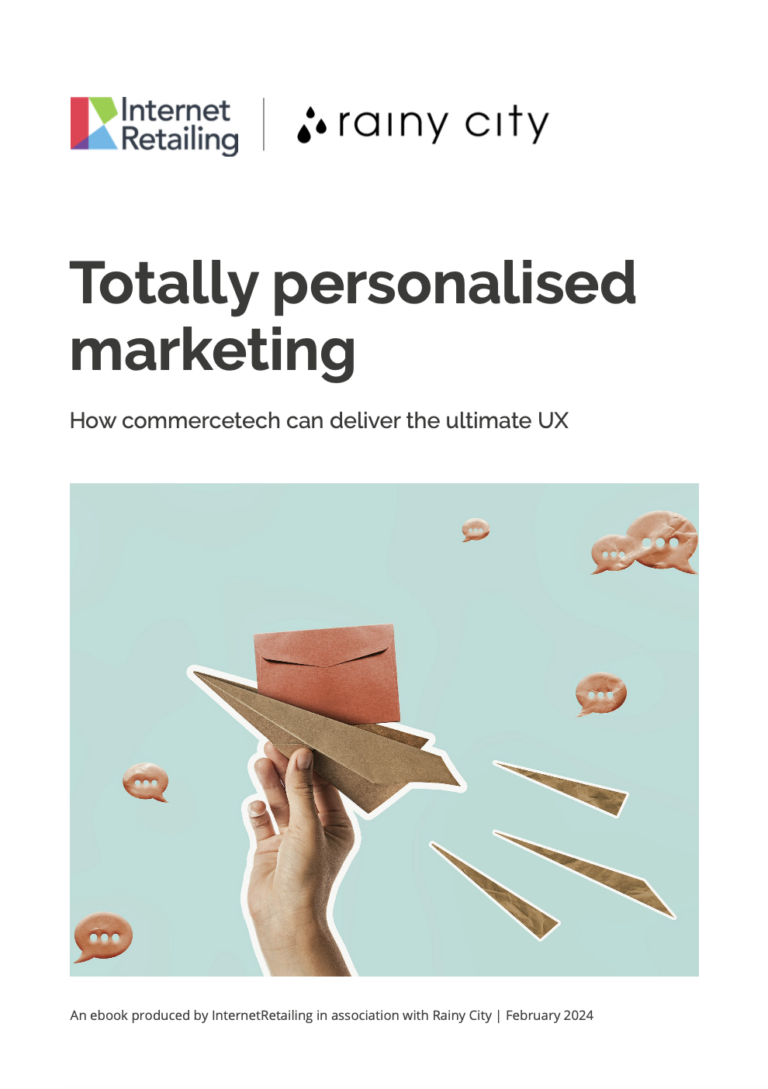Online sales showed their weakest growth since 2012 in October, while total UK retail sales rose only marginally, and fell by 1% on a like-for-like basis, figures from the British Retail Consortium (BRC) suggest today.
The BRC-KPMG Retail Sales Monitor estimated that online sales of non-food products grew at 4% over the first four weeks of the month, below both the three-month (8.7%) and 12-month (8.3%) averages – and at the lowest rates since its records began in December 2012. A larger share of sales took place online than since December 2016, with ecommerce accounting for 23.7% of the months’ retail sales, up from 22.6% in October 2016.
Total UK retail sales grew by 0.2% in October, contrasting with growth of 2.4% recorded a year, earlier, while a 1% fall in like-for-like sales, which strip out the effect of store openings and closures, contrasts with a rise of 1.7% at the same time last year.
Helen Dickinson, chief executive of the British Retail Consortium , said: “It was a meagre month in October for retail sales as shopping activity slumped. With total growth at its lowest since May and below the 12-month average, retailers will have cause for concern as they prepare for the crucial run up to Christmas.
“The decline was driven by the worst performance of non-food sales since our record began in January 2011, as consumers appear to have opted for outdoor experiences and excursions during half term, over visits to the shops. The growth in food sales meanwhile, adds some colour to this otherwise anaemic picture, but these figures are very much buoyed by inflation.”
And while online sales grew, albeit anaemically, in-store sales of non-food goods were down by 2.2% in total, and 2.9% like-for-like. Average in-store sales over the last 12 months were down by an average of 2.1%, the deepest since BRC records began in January 2012, while total non-food retail sales were up by just 0.1% on average over the last three months, and 0.2% over the last year.
Food sales, meanwhile, grew by 2.4% like-for-like and by 3.7% in total, above the 12-month average of 3.2%. That’s the highest average since July 2013.
“Real consumer spending power has been on a downward trend in the last year as the acceleration in inflation has caused shoppers to become ever more cautious in considering what purchases they can afford. Many now face higher borrowing costs, given the rise in interest rates, which will only serve to heap further pressure onto household finances,” said Dickinson.
“Considering the intrinsic link between consumer spending and economic growth, the Chancellor should reflect on this disappointing state of play and deliver a Budget that allays the risks of a further slowdown in consumer spending, by keeping down the cost of living. In other words, a shoppers’ Budget.”
Paul Martin, head of retail at KPMG [irds vkpm], said: “October marked yet another reversal of fortunes for retailers, reinforcing just how volatile consumer spend has been. Despite the positive picture last month, these latest figures will be a real disappointment and not the start to the golden quarter retailers had hoped for.
“Clothing sales were particularly hard hit. After a brief uptick, fashion sales reverted back to the dreary theme we have seen for a number of months this year. Unseasonably warm weather last month will not have helped, but this is unlikely to be the only reason the new ranges are proving unpopular.
“Overall growth online was lacklustre at best, although health and beauty products continued to stand out as a strong performer. The burning questions for retailers will be whether shoppers are holding off their purchases until Black Friday, and whether retailers can recover from this month’s poor performance to end the year on a high.
“With the Bank of England’s interest rate decision seeing the first hike in ten years, we are likely to see a continuation of the sector’s slow-down, with consumers having less disposable income to spend. The Autumn Budget also nears closer and retailers will most likely be hoping for some form of relief, particularly after the challenges business rates created.”
Joanne Denney-Finch, chief executive of food and drink analyst the IGD, said: “Food and grocery sales have remained buoyant with another month of above inflation growth, perhaps benefiting from cutbacks elsewhere in household spending. However, with 77% of shoppers expressing concern about the state of the economy and 79% about living costs, a mood of caution prevails. A fifth (20%) say they will focus more on saving money in their food and grocery shopping in the year ahead – the record highest level since September 2016.”
Commenting on the figures, Richard Lim, chief executive of economics consultancy Retail Economics said: “Retail sales slowed sharply in October as shoppers cut back spending on non-essentials, especially within apparel. These feeble results are likely to set the tone for the final quarter of the year as the pinch on personal finances intensifies and households contemplate the impact of rising interest rates.
“Despite the Bank of England suggesting that interest rates will rise only very gradually, our research shows that almost half of consumers expect another rate hike in the next six months.
“With real earnings expected to remain in negative territory until the middle of next year, the trading environment for retailers in the coming months is expected to be very challenging.”









